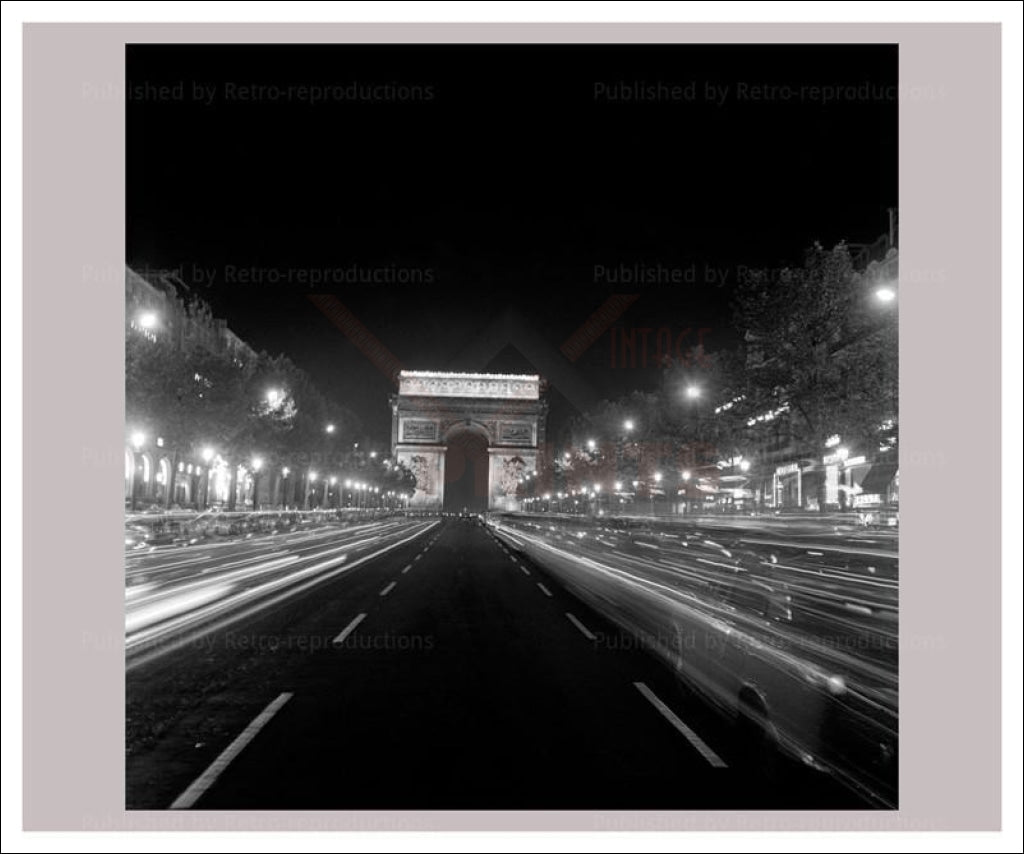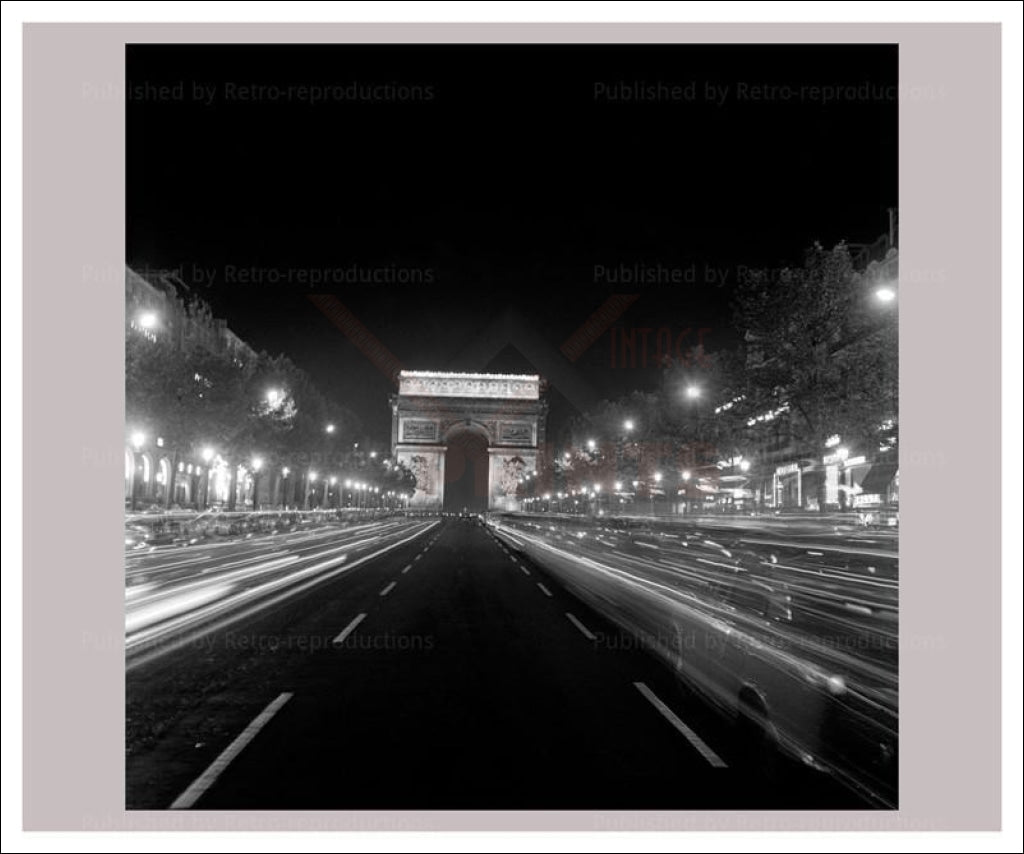Avenue des Champs Elysees, Paris
Avenue des Champs Elysees, Paris
Couldn't load pickup availability
Share
The Avenue des Champs-Élysées, is an avenue in the 8th arrondissement of Paris, 1.9 kilometres (1.2 mi) long and 70 metres (230 ft) wide, running between the Place de la Concorde and the Place Charles de Gaulle, where the Arc de Triomphe is located. It is known for its theatres, cafés, and luxury shops, for the annual Bastille Day military parade, and as the finish of the Tour de France cycle race. The name is French for the Elysian Fields, the paradise for dead heroes in Greek mythology.
It is one of the most famous streets in the world.
Until the reign of Louis XIV, the land where the Champs-Élysées runs today was largely occupied by fields and kitchen gardens. The Champs-Élysées and its gardens were originally laid out in 1667 by André Le Nôtre as an extension of the Tuileries Garden, the gardens of the Tuileries Palace, which had been built in 1564, and which Le Nôtre had rebuilt in his own formal style for Louis XIV in 1664. Le Nôtre planned a wide promenade between the palace and the modern Rond Point, lined with two rows of elm trees on either side, and flowerbeds in the symmetrical style of the French formal garden. The new boulevard was called the "Grand Cours", or "Grand Promenade". It did not take the name of Champs-Élysées until 1709.
In 1710 the avenue was extended beyond the Rond-Pont as far as the modern Place d'Étoile. In 1765 the garden was remade in the Le Nôtre style by Abel François Poisson, the marquis de Marigny, brother of the Madame de Pompadour and Director-General of the King's Buildings. Marigny extended the avenue again in 1774 as far as the modern Porte Maillot.
By the late 18th century, the Champs-Élysées had become a fashionable avenue; the trees on either side had grown enough to form rectangular groves (cabinets de verdure). The gardens of the town houses of the nobility built along the Faubourg Saint-Honoré backed onto the formal gardens. The grandest of the private mansions near the Avenue was the Élysée Palace, a private residence of the nobility which during the Third French Republic became the official residence of the Presidents of France.
Following the French Revolution, two equestrian statues, made in 1745 by Nicolas and Guillaume Coustou, were transferred from the former royal palace at Marly and placed at the beginning of the boulevard and park. After the downfall of Napoleon and the restoration of the French monarchy, the trees had to be replanted, because the occupation armies of the Russians, British and Prussians during the Hundred Days had camped in the park and used the trees for firewood.[3]
The avenue from the Rond-Point to the Étoile was built up during the Empire. The Champs-Élysées itself became city property in 1828, and footpaths, fountains, and, later, gas lighting were added.
In 1834, under King Louis Philippe, the architect Jacques Ignace Hittorff was commissioned to redesign the Place de la Concorde and the gardens of the Champs-Élysées. He kept the formal gardens and flowerbeds essentially intact, but turned the garden into a sort of outdoor amusement park, with a summer garden café, the Alcazar d'eté, two restaurants, the Ledoyen and the restaurant de l'Horloge; a theater, the Lacaze; the Panorama, built in 1839, where large historical paintings were displayed, and the cirque d'eté (1841), a large hall for popular theater, musical and circus performances. He also placed several ornamental fountains around the park, of which three are still in place.
The major monument of the Boulevard, the Arc de Triomphe, had been commissioned by Napoleon after his victory at the Battle of Austerlitz, but it was not finished when he fell from power in 1815. The monument remained unfinished until 1833-36, when it was completed by King Louis Philippe.

-
High Quality Reprints
Every piece of art is printed using premium materials. We carefully package and deliver your order to your door.
-
Wholesale Orders
We welcome wholesale inquiries on some of our products. Click here to learn more about our offering.
Sign Up for Our Newsletter
Get a sneak peek on upcoming promos and get 10% off your first order.

